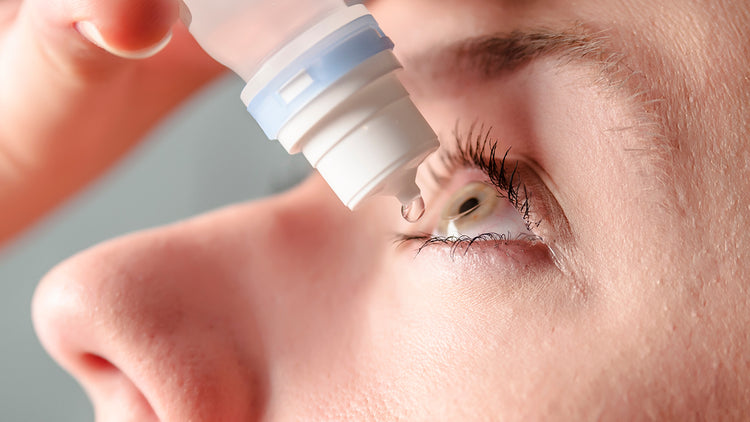
We all come in contact with allergies in some way. Every spring, so many of us have runny noses and itchy eyes. We often hear people complain about their allergies in between sniffles. Or maybe you’ve been to a peanut-free facility with your kid and can’t bring your trusty PB&J. But what is an allergy?
What Is an Allergy?
An overreaction of your body’s immune system causes allergies. Typically, your body perceives harmless substances you encounter as dangerous. Your body then releases Immunoglobulin E (IgE) antibodies which cause your cells to release histamines. This process results in the allergic reaction we all dread.
Allergic reactions can range from simple symptoms, like the common cold, to skin reactions, to extremely serious reactions. Anaphylaxis is a severe and sometimes life-threatening allergic reaction that requires immediate emergency medical assistance.
What Are the Most Common Triggers of Allergies?
There is almost an endless list of allergens. An allergen is a normally harmless substance that your body perceives as harmful. Your immune system overreacts, causing the allergy symptoms you display. As many people as there are on the earth, someone somewhere is likely allergic to something you touch, eat, or breathe comfortably every day. There are, however, some items that many people have in common as allergens:
- Pollen
- Dust
- Foods
- Insect stings
- Animal dander
- Mold
- Medications
- Latex
Below are the most common allergens related to anaphylaxis:
- Medicines, such as penicillin
- Foods, such as peanuts
- Insect stings, such as bee stings
You may know someone who is allergic to peanuts. You may have received notification from a school or workplace stating they are a peanut-free facility. Peanuts are a common food allergy that can cause a very severe reaction. It has been estimated that 6.1 million people have an allergy to peanuts.
Insect stings cause an allergic reaction in around 5% of people, and they can cause anaphylaxis. The most common insect stings that cause allergic reactions are bees, yellow jackets, wasps, and hornets.
Commonly, someone who is allergic to peanuts or insect stings will carry an epinephrine pen with them. Using the epinephrine injection as soon as possible can help give someone enough time to seek emergency medical attention. Epinephrine is not a cure for anaphylaxis, but it can save your life. If you know someone who is susceptible to an anaphylactic reaction, ask them to show you where they keep their epinephrine and how to use it. Epinephrine injections are done with an auto-injector, making them so easy for individuals to use on themselves.
Are Allergies More Common in Certain Climates or Regions?
Do you know your seasonal hay fever is an allergy? Well, it is! During the spring and summer each year, some people have hay fever. Hay fever has the symptoms of a common cold but is actually an allergic reaction to pollen.
Different seasons have environmental allergens that can affect you if you have allergies. Tree and grass pollen are the major contributors to allergic rhinitis in the spring and summer. In the fall, shrubbery and weeds, like sagebrush and ragweed, are the offenders in this notorious allergy season.
Spring and summer allergies are highly prevalent in areas where there is a distinct differentiation in seasons. The Allergy and Asthma Foundation of America releases an annual report on U.S. allergy hotspots. For example, in 2022, these were the top 10 areas with a worse-than-average allergy:
- Scranton, PA
- Wichita, KS
- McAllen, TX
- Richmond, VA
- San Antonio, TX
- Oklahoma City, OK
- Hartford, CT
- Buffalo, NY
- New Haven, CT
- Albany, NY
What Are the Symptoms of an Allergic Reaction?
Allergic reactions can range from symptoms like the common cold to extremely serious. If you are having an allergic reaction, you may have the following symptoms:
- Nasal congestion
- A runny nose
- Postnasal drip
- Itchy nose
- Itchy watery eyes
- Sneezing
- Reddish or purple shadows under your eyes (commonly called allergy shiners)
Allergic skin reactions may include the following:
- Rash
- Hives
- Swelling
- Itching
Anaphylaxis may include the following symptoms:
- Shortness of breath
- Wheezing
- Tightness in your chest
- Swelling of your throat
- An itchy mouth
- A rash
Are There Any Steps I Can Take to Avoid or Reduce My Allergies?
There are steps you can take to help with your allergies.
Home
- Consider an air cleaner to filter allergens from the air.
- Dust and vacuum regularly.
- Change your vacuum bags periodically, and don’t let them become overfilled. Anti-allergen vacuum bags are an option to help keep your vacuum clean.
- Keep your home dry during humid months to avoid mold growth.
- Change or clean your A/C or heat filters regularly.
Over-the-counter Medication
- Antihistamines
- Decongestants
- Intranasal corticosteroids
Always follow the instructions on the package when taking over-the-counter medications.
Medical
- Speak to your physician.
- Allergy testing to avoid allergens
- Immunotherapy to stop your immune system from reacting so harshly to allergens
Many People Experience Allergies
Allergies can frustrate anyone. They are uncomfortable and sometimes dangerous. If you can control your allergies through self-care, following the steps above will help. If you still have difficulties, make an appointment to talk to your provider. They can help you successfully manage allergies.
References
American Academy of Allergy Asthma and Immunology. (n.d.). Allergies Overview. https://www.aaaai.org/Conditions-Treatments/Allergies/Allergies-Overview
American Academy of Allergy Asthma and Immunology. (2020, September 28). Anaphylaxis. https://www.aaaai.org/Tools-for-the-Public/Conditions-Library/Allergies/Anaphylaxis
Asthma and Allergy Foundation of America. (2022). The Allergy Capitals™ 2022. https://www.aafa.org/wp-content/uploads/2022/08/aafa-2022-allergy-capitals-report.pdf
Asthma and Allergy Foundation of America. (2023, March). Allergy Facts. https://aafa.org/allergies/allergy-facts/
Food Allergy Research and Education. (2023). Facts and Statistics. https://www.foodallergy.org/resources/facts-and-statistics
National Library of Medicine - NIH. (2020, April 3). Hay fever: Overview. InformedHealth.org [Internet]. https://www.ncbi.nlm.nih.gov/books/NBK279488/

Nurse Bio:
Kate Houck, RNC-OB
Kate is a L&D nurse with 9+ years of experience in OB, lactation, school nursing, and pediatrics. She has a passion for taking care of families and helping new nurses be the best they can be.
Life is too short to sit in a doctor’s office
Sign up for our weekly newsletter and get valuable healthcare tips and tricks in your inbox!
Sign up now and unsubscribe anytime.
- Choosing a selection results in a full page refresh.
- Press the space key then arrow keys to make a selection.
























































































